Cruisers project 68-bis: "Sverdlov" against the British tiger. Part of 2
Comparing the 68K and 68-bis cruisers with foreign pre-war light cruisers and the post-war American Worchesters, we still ignored such interesting post-war foreign ships like the Swedish light cruiser Tre Krunur, the Dutch De Zeven Province, and Of course, the last British artillery cruisers of the Tiger type. Today we will correct this misunderstanding, starting from the end of our list - British cruisers like "Tiger".
It must be said that the British fairly dragged out the procedure for creating their last artillery cruisers. In total, during the war years, eight Minotaur-type ships were ordered, which represented a somewhat improved version of the Fiji light cruisers. The first three Minotaurs were completed according to the initial design, with the head of them being transferred to the Canadian in 1944 the fleet under the name Ontario, two more joined the Royal Navy. The construction of the remaining cruisers was frozen shortly after the war, and the two ships that were in the early stages of construction were dismantled, so that by the end of the 40s the British were afloat three unfinished light cruisers of this type: Tiger, Defense and Blake ".
The British, who fully felt the weakness of the anti-aircraft armament of their own cruisers during World War II, nevertheless did not want to limit themselves to the creation of anti-aircraft cruisers with 127-133-mm caliber. Such ships, in their opinion, were too weak for both the sea battle and the shelling of the coast, and therefore it was decided to return to the development of a universal heavy artillery system. The first such attempt was made even before the war, when creating light cruisers like the Linder, but was unsuccessful. It turned out that the tower installations, which retain manual operations when loading, would not be able to provide an acceptable rate of fire, and the creation of fully automatic artillery systems capable of charging at any elevation angle was beyond the technical capabilities then available. During the war, the British made a second attempt.
In 1947 r, the British gathered to complete the construction of cruisers with 9 * 152-mm universal guns and 40-mm "Bofors" in new installations, then the project was repeatedly changed and, as a result, the light cruiser Tiger had two 152- mm Mark XVVI installations which drawing is given below:
Each of them had two fully automatic 152-mm / 50 QF Mark N5 cannons capable of developing a firing rate (per barrel) 15-20 shots / min and a very high speed of vertical and horizontal guidance, reaching 40 degrees / sec. In order to make the six-inch gun work with such speeds, it was necessary to significantly increase the mass of the tower installation - if the two-gun 152-mm Linder towers weighed 92 t (rotating part), then the two-gun Mark XXVI - 158,5 t, while the tower defense provided only 25-55 mm armor. Since the rate of 15-20 shots / min warmed the guns extremely quickly, the British had to provide water cooling of the barrels.
Apparently, it was the British managed to create the world's first completely successful naval universal 152-mm installation, although there are some mention of some problems in its operation. However, it is well known that versatility is the way of compromise, and the Mark N152 5-mm gun is no exception. In fact, the British were forced to reduce its ballistics to the American 152-mm Mark 16: with the weight of the 58,9-59,9 kg shells, she provided the initial speed of the entire 768 m / s (Mark 16 – 59 kg and 762 m / s, respectively). In fact, the British managed to do what the Americans could not do on their Worchesters, but we should not forget that the British completed their development on 11 years later.
The second British Tiger anti-aircraft caliber was represented by three Mark 76 two-gun 6-rigs with very outstanding characteristics - its rate of fire was 90 shells weighing 6,8 kg with an initial speed of 1 036 m / s per barrel, while the trunks also needed water cooling. The firing range reached a record for the 76-mm 17 830 cannons. The author of this article has no information about any problems with the operation of this artillery system, but it is somewhat surprising that it has not been used on any other ships of the Royal Navy. The fire control was carried out by five radar directors of the 903 type each, and any of them could carry out guidance both on the surface and on the air target. In addition, each 152-mm or 76-mm installation had its own director.
As for the protection, then the light cruisers of the Tiger type corresponded to all the same Fiji - 83-89 mm armor belt from the bow and aft 152-mm turret, in the area of engine rooms on top of the main one - another 51 mm armor belt, the traverse thickness , deck, barbety - 51 mm, towers, as already mentioned above - 25-51 mm. The cruiser had a standard displacement 9 550 t, power installation capacity 80 000 hp and developed the 31,5 node.
Light cruiser "Tiger"
Comparing the cruiser project 68-bis "Sverdlov" and English "Tiger", we have to state that the armament of the British ship is much more modern than the Soviet one and belongs to the next generation of naval artillery and fire control systems. The Soviet 152-mm B-38 cannon fire rate was 5 rounds / min (during firing practice, the bursts had to follow at a twelve second interval), respectively, a Sverdlov-type cruiser could release 12 shells from their 60 guns per minute. The British cruiser had only the 4 of the barrel, but with a rate of fire of 15 rpm, in a minute it could release all the same 60 projectiles. Here it is necessary to give a small explanation - the maximum rate of fire of the British gun was 20 rds / min, but the fact is that the actual rate of fire is still below the limit values. So, for example, for tower installations of the MK-5-bis of the Soviet cruisers, the maximum rate of fire of 7,5 rds / min is indicated, but in practical firing it is “asked” less than 1,5 times, i.e. 5 rpm Therefore, it can be assumed that the real rate of fire of the British six-inch guns is still closer to the 15, but not to the maximum 20 shots per minute.
Domestic radar "Zalp" (two for the cruiser project 68-bis) and the main caliber of the main caliber "Molniya-AC-68" ensured firing only at surface targets. True, it was assumed that 152-mm artillery anti-aircraft fire could be controlled using the Zenit-68-bis STM, designed to control the 100-mm SM-5-1, but could not be achieved, which caused the anti-aircraft fire on the tables. At the same time, British directors with radar type 903 issued target designation of both surface and air targets, which, of course, made it possible to control the British six-inch anti-aircraft fire many times more efficiently. This is not to mention the fact that the angles of vertical guidance and the speed of aiming at the target of the British installation radically exceeded those of the MK-5-bis: the Soviet tower installation had the maximum elevation angle 45 hail, and the English - 80 hail, speed of vertical and horizontal guidance MK-5-bis total 13 hail, in English - to 40 hail.
And, nevertheless, in a duel situation “Sverdlov against Tiger” the chances of a Soviet cruiser winning are much higher than those of an “Englishman”.
Of course, the fact that the light cruiser Tiger, with only four barrels of the main caliber, is capable of providing the same fire performance as the Sverdlov with its 12 cannons makes a huge impression. But this fact should not hide from us that in all other respects the British six-inch match corresponds to the American 152-mm "old woman" Mark 16. This means that the capabilities of the Tiger are absolutely no better than the 12 six-inch guns of the American Cleveland and even inferior to it in fire performance, because the American guns were faster than the Soviet B-38. But, as we have already analyzed in previous articles, a dozen Soviet 152-mm B-38 gave Soviet cruisers significant advantages in range and armor penetration over both American and more powerful British 152-mm artillery systems. Neither the American cruisers nor the "Tiger" could conduct an effective firefight at a distance of 100-130 kb, because the maximum firing range of their guns was 123-126 kb, and the effective firing range was less than 25 percent (less than 100 kb) since at close to the maximum distances dispersion of shells is excessively large. At the same time, the Soviet B-38 with its record-breaking performance characteristics ensured a reliable hit of the target at 117-130 kbt distances, which was confirmed by practical shooting. Accordingly, a Sverdlov-type cruiser can open fire much earlier than the British cruiser, and it’s not a fact that he will let him get closer to himself, since he is superior in speed to the Tiger, albeit slightly. If “Tiger” is lucky and he can get close to the Soviet cruiser at a distance of effective fire of his guns, the advantage still remains with the Sverdlov, because with equal fire performance of the ships, the Soviet shells have a greater initial speed (950 m / s against 768 m / s), and, respectively, and armor penetration. At the same time, the protection of the Soviet cruiser is much better: having an armor-shell of the same thickness and armor on 12-20% thicker, the Sverdlov has many times better protected artillery (175-mm forehead, 130 mm barbet against 51 mm in Tiger) armored cabin, etc. More powerful guns with better security and equal fire performance provide the 68-bis cruiser with an obvious advantage at medium combat distances. And, of course, not quite an “honest” argument - the standard displacement of the Sverdlov (13 230 t) is 38,5% more than that of the Tiger (9 550 t), which is why the cruiser of the 68-bis project has greater combat stability simply because that it is larger.
Light cruiser "Sverdlov"
Thus, the Soviet cruiser in an artillery duel is superior to the British, despite the fact that the artillery armament of the latter is much more modern. As for the air defense capabilities, here, it would seem, one should witness the obvious and multiple superiority of the English cruiser, but ... Not everything is so simple.
It is very interesting to compare the Soviet 100-mm installation of the CM-5-1 and the English 76-mm Mark 6. With the simplest arithmetic calculation, the picture turns out to be completely bleak for domestic cruisers. The British 76-mm “Spark” is able to send 180 shells 6,8 kg each (90 per barrel) to the target, in a minute. 1224 kg / min. The Soviet SM-5-1, at the same time making 30-36 rpm 15,6 kg with projectiles (15-18 per barrel) - only 468-561 kg. It turns out a uniform apocalypse, one single 76-mm artillery gun of the British cruiser shoots almost as much metal per minute as the three airborne SM-5-1 of the Soviet cruiser ...
But after all the bad luck, in the description of 76-mm creations of the “gloomy British genius” absolutely strange figures are indicated - the ammunition load directly in the tower installation is only 68 shots, and the feed mechanisms with which each weapon is capable of delivering only 25 (twenty-five) shells per minute. Thus, for the first minute of shooting, the 76-mm “Spark” will be able to release not 180, but only 118 shells (68 shots from the battle pack + another 50 raised by reloading mechanisms). In the second and subsequent minutes of the battle, its rate of fire will not exceed 50 rds / min (25 rds per barrel). How so? What is this terrible design miscalculation such?
But can we blame British developers for failing to fold 2 + 2? It is unlikely - of course, in the 50-ies of the last century, British science and industry are not the first in the world, but still to the derogatory "The camel is a horse made in England" is still very far away. The English 76-mm Mark 6 fire rate is really 90 rds / min per barrel. But this does not mean that it is capable of producing 90 shots from each barrel every minute - from this it will simply overheat and become unusable. In the first minute, she will be able to launch 59 shells on the barrel in short bursts, with interruptions. Each subsequent minute she will be able to give short lines with a total “capacity” of no more than 25 shells per barrel - obviously, to avoid overheating. This, of course, is nothing more than the assumption of the author, and a respected reader will decide for himself how much it can be true. However, it should also be noted here that: the enchanting ballistics of British guns was achieved, including very high pressure in the barrel - 3 547 kg per cm2. This is higher than that of the domestic 180-mm B-1-P guns - it only had 3 200 kg / cm2. Does anyone seriously expect that in the 50-s it was possible to create an artillery system with such ballistics and the ability to conduct a long fire fight in long bursts with a rate of 1,5 shots / sec?
However, regardless of the reasons (danger of overheating or impassable alternative endowment of the designers of the installation), we can only state that the actual rate of fire of the British Mark 6 is significantly lower than the arithmetic calculation on the passport value of the rate of fire. And this means that during 5 minutes of firefight, the Soviet CM-5-1, making 15 bpm per barrel (she’s not bothered to fire for a long time with such intensity), can release 150 shells weighing 15,6 kg or 2340 kg . A three-inch “Englishwoman” for the same 5 minutes will launch 318 shells weighing 6,8 kg or 2162,4 kg. In other words, the fire performance of the Soviet and British installations is quite comparable, with a slight advantage of the Soviet SM-5-1. But the Soviet "weaving" hits much further - its projectile flies on 24 200 m, English - 17 830 m. The Soviet installation is stabilized, but it is not known how the British Sparki dealt with this issue. The “Englishwoman” had shells with radio-explosives, but by the time the “Tiger” was put into operation, the CM-5-1 had them too. And in the end we come to the fact that, despite all its advancement and automaticity, the British 76-mm Mark 6 was still inferior in combat capabilities of a single Soviet SM-5-1. It remains only to recall that there were six CM-5-1 on the Sverdlov-type cruisers, and only three on the British Tigers ... Of course, it is possible that the individual directors of the OMS for each British installation provided better guidance than two SPNs 500, who controlled the shooting of the Soviet "weave", alas, the author of this article does not have information to compare the domestic and British SLA. Nevertheless, I would like to remind the respected lovers of Western technology that the artillery armament of British surface ships turned out to be almost useless against attacks by Argentine planes (even primitive light attack aircraft) —but in fact, during the Falklands conflict, British "barrels" were controlled by much more sophisticated radars and FCS than what stood on the "Tiger".
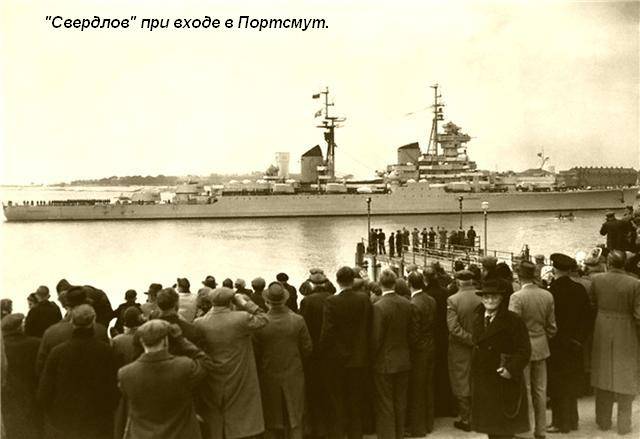
It is interesting, by the way, that the masses Mark 6 and CM-5-1 differ slightly - 37,7 and Mark 6 versus 45,8 and CM-5-1, i.e. in terms of the weights and the occupied space, they are comparable, although it can be assumed that the “Englishwoman” requires less calculation.
So, we came to the conclusion that the air defense capabilities of the 152-mm artillery of the Tiger light cruiser many times exceed those of the main caliber of the 68-bis project, but the British “second caliber” of the 76-mm is much inferior to the Soviet “weavers” Sverdlov "and in quality and quantity. How to compare the general air defense capabilities of these ships?
You can offer a rather primitive way - in fire performance. We have already calculated that for a five-minute battle for the British 76-mm and Soviet 100-mm units. The English 152-mm two-gun turret is capable of releasing 30 anti-aircraft missiles weighing 59,9 kg in a minute, i.e. 1 797 kg per minute or 8 985 kg for 5 minutes, respectively, two such towers for the same time will release 17 970 kg. Add to this the mass of three 76-mm “Sparok” projectiles - 6 487,2 kg and we find that within 5 minutes of intense combat, the light cruiser “Tiger” is capable of releasing 24 457,2 kg of anti-aircraft projectiles. The six SM-5-1 of the Soviet "Sverdlov" have lower fire performance - together they will release 14 040 kg of metal. Of course, one can argue that the author compares the capabilities of the ships when firing on both sides, but in the case of repelling an attack from one side, the British cruiser will have an overwhelming advantage: two 76-mm installations and 2 152-mm towers for 5 minutes will release 22,3 tons of metal, and three Soviet CM-5-1 - just a little more than 7 tons. However, it should be remembered that the same Americans, and then, and much later, tried to organize air attacks from different directions, like the famous “star” raids of the Japanese in World War II, and it would be more logical to consider just such (rather than “single breasted”) form of air attack .
And do not forget about the following: the long-range Soviet "weaving" of the CM-5-1 is ahead of not only the 76-mm, but also the 152-mm British art installations. The flight time at medium distances 100-mm projectiles is lower (because the initial speed is higher), respectively, it is possible to adjust the fire faster. But even before the enemy planes enter the CM-5-1 strike zone, they will be fired upon with the main caliber of the Sverdlov - the practice of the exercises shows that the Soviet 152-mm guns had time to launch 2-3 volleys on targets of the type LA-17P, Having speeds from 750 to 900 km / h. And besides, the Soviet cruiser also has 32 37-mm anti-aircraft guns, which, although old, are still quite deadly for the enemy plane approaching at a distance of fire - there’s nothing like the English Tiger.
All of the above, of course, does not provide the Soviet cruiser with superiority or at least equality in the capabilities of the air defense system, but it must be understood - although the British Tiger has an advantage in this parameter, it is not absolute. In terms of air defense, the British light cruiser exceeds the ships of the 68-bis project - perhaps tens of percent, but not by orders of magnitude.
In general, we can say that the light cruisers Sverdlov and Tiger are comparable in their capabilities, with a slight advantage of the Soviet ship. The Sverdlov is larger and has greater combat stability, it is better armored, slightly faster, and has an advantage in range (up to 9 thousand nautical miles against 6,7 thousand). Its capabilities in artillery combat against a surface enemy are higher, but against the air - lower than those of the British cruiser. Accordingly, it can be stated that due to the use of more modern (in fact, we can talk about the next generation) artillery and SLA, the British were able to make a cruiser comparable to the Sverdlov in a much smaller displacement - yet the Tiger is almost 40% less.
But was it worth it? In retrospect it can be argued - no, not worth it. After all, what actually happened? After the war, both the USSR and Great Britain were in need of modern artillery cruisers. But the USSR, taking proven equipment, completed the 1955 ships of the 5K project to the 68, laid and handed over the 14-bis cruisers to the 68 fleet, thereby creating the foundation of the future naval fleet of the ocean navy. At the same time, in the USSR, they did not attempt to introduce universal six-inch “superguns”, but developed a fundamentally new marine weapon.
And what did the British do? Having spent time and money on the development of universal large-caliber artillery systems, they did put into operation three Tiger-type cruisers - in 1959, 1960 and 1961, respectively. They really became the pinnacle of the artillery case, but at the same time they did not have a tangible superiority over the previously built "Sverdlovs". And most importantly - they were not its analogues. The head cruiser of the 68-bis project was commissioned in the 1952 year, 7 years before the lead Tiger. And after some 3 years after the Tiger entered service, the fleets of the United States and the USSR added to the Albany and the Terrible rocket cruisers - and they have much more reason to be considered the same age as the British cruiser than the Sverdlov ".
Perhaps, if the British had given less time and money to their purely artillery "Tigers", then their URO-type cruisers of the County (reclassified later to the destroyers) would not have looked so harmed against the background of the first Soviet and American missile cruisers. However, it is already completely different. story...
Unfortunately, there is almost no information about the Swedish and Dutch cruisers, either in domestic sources or on the Russian-language Internet, and the available data are very contradictory. Here, for example, the Swedish “Tre Krunur” - with a standard displacement of 7 400 tons, a reservation with a weight of 2100 t is attributed to it, i.e. 28% of standard displacement! Not a single foreign light cruiser had a similar ratio - the weight of the armor of the Italian “Giuseppe Garibaldi” was 2131 t, the Soviet “Chapaev” - 2339 t, but they were much larger than the Swedish ship. At the same time, the information on the booking scheme is very fragmentary: it is stated that the ship had an internal armor belt 70-80 mm thick, and at the same time two flat armored decks of 30 mm each, adjacent to the lower and upper edge of the armor belt. But how can this be? After all, the engine and boiler rooms are not rubber - light cruisers, and any other ships have never had a flat armor on the lower edge of the armored belt. Armored decks or lay on the upper edge, or had bevels, in the area of boiler rooms and machine rooms to provide sufficient space between the armored deck and the bottom. Russian-language sources claim that in addition to the above 30 mm armored hull:
Usually this refers to boiler rooms and engine rooms, as well as areas of artillery cellars, but the fact is that thinking of the technical characteristics of warships is very dangerous. We have already considered the case when, on the basis of incorrect and incomplete information, a statement was made that the American “Cleveland” is 1,5 times more than the Soviet cruisers 68-bis in booking, while in fact its defense was weaker than that of the Sverdlov. Suppose, all the same, we are talking about the protection of boiler rooms, machine rooms and areas of towers of the main caliber, but then we should expect an indication of the total thickness of the armored form at the level of 80 - 110 mm, while sources report only 30 + 30 mm!
Even more confusing is the assertion of the similarity of the Tre Krunur reservation schemes and the Italian light cruiser Giuseppe Garibaldi. The latter had two separated armor belts - the board was defended by 30 mm with armor, followed by the second armored belt with a thickness of 100 mm. What is interesting - the armor belt was curved, i.e. its upper and lower edges were connected to the upper and lower edges of the 30 mm external armor belt, forming a semicircle. At the level of the upper edge of the armored belts, 40 mm of armored deck was superimposed, and above the armored belt the board was protected by 20 mm of armored plates. Thus, contrary to allegations of similarity, according to descriptions of Russian-speaking sources, the Garibaldi reservation scheme has nothing in common with Tre Krunur. The situation is further confused by the drawings of the Swedish cruiser - almost all of them clearly show the outer armor belt, while from the description it follows that the Tre Kronur belt has an inner belt, which means it should not be visible in the figure.
Here we can assume banal translation errors: if we assume that the “two 30-mm armor-hulls” of the Swedish cruiser are in fact external 30 mm armor-belts (which we see in the figures), to which the main, internal, 70-80 mm thickness adjoins and the lower and upper edges (similar to the “Garibaldi”), then the “Tre Kronur” armor protection scheme really becomes like an Italian cruiser. In this case, the “additional armor” with a thickness of 20-50 mm is also understandable - this is an armored deck, differentiated by the importance of the protection areas. The Tre Kronor towers had a mediocre defense - 127-mm frontal plate, 50 mm roof and 30 mm walls (175, 65 and 75 mm, respectively, in Soviet cruisers), but the barbet sources say nothing, although it is doubtful that the Swedes they forgot. If we assume that the barbets were of a thickness comparable to the frontal slab, then their weight was rather big, besides - sources point to the presence of a thick (20 mm) upper deck, which, strictly speaking, was not armor, since it was made of shipbuilding steel. could provide some extra protection. And if we assume that Tre Kronor had barbettes at the level of “Garibaldi”, i.e. order 100 mm, vertical booking 100-110 mm (30 + 70 or 30 + 80 mm, but in fact even more, because the second armored belt was curved and its reduced thickness was greater) and 40-70 mm armored deck (where besides the actual armor counted shipbuilding steel 20 mm, which is wrong, but some countries did so) - then the total weight of armor, perhaps, will reach the desired 2100 t.
But how then in 7 400 tons of standard displacement of the Swedish cruiser could fit everything else? After all, in addition to a large mass of armor, the ship had a very strong power plant, which had a nominal power in 90 000 hp, when forcing - up to 100 000 hp Probably, boilers with increased steam parameters were used, but still the mass of the installation should have been very significant. And seven six-inch guns in the three towers ...
Light cruiser "Tre Kronur"
It turns out to be a paradox - not a single country in the world was able to create a light cruiser, in terms of its capabilities and dimensions, it is not that equal, but even at least as close as the “Tre Krunur”! The British Fiji and Minotaurs, the French La Galissonera, the Italian Raimondo Montecuccoli, had significantly weaker reservations, comparable power plants, but were significantly larger than the Tre Krunur. Savings in service due to the rejection of the intermediate anti-aircraft caliber? This does not explain anything: the three Tre Krunur towers weighed no less than 370 tons, and the three towers of La Galissoniera were 516 tons. Four 90-mm French sparks had a much smaller mass than ten paired and seven single-barrel 40-mm "Bofors" ". Thus, there is a difference in the weight of the artillery armament of the “Frenchman” and the “Swede”, but it is relatively small - no more than 150, well, maybe 200 tons. The power plant of the French is even weaker than that of the Swedish ship - 84 thous. Hp instead of 90 thousand hp But the French were able to allocate only 1460 tons for booking, i.e. 640 tons less than the Swedes! And this is despite the fact that the standard displacement of "La Galissoniera" on 200 tons more!
But the “Tre Krunur” is a cruiser that was completed after the war. At this time, due to the changing requirements of the sea battle, the ships had to be installed much more than any equipment (first of all - radar, but not only) than on pre-war projects. More equipment, more space for its placement, more crew for its maintenance and, accordingly, with an equal number of artillery barrels, the post-war ships turned out to be heavier than the pre-war ones. But, for some reason, not in the case of the Swedish cruiser.
It is interesting to compare the “Tre Krunur” and the Dutch cruiser “De Zeven Provinsen”.
In terms of armament, the ships are almost identical: as the main caliber, the De Zeven Provinsen has eight 152-mm / 53 guns of the Bofors 1942 g guns, against seven absolutely same cannons on the Tre Krunur. The guns "De Zeven Provinsen" were placed in four two-gun towers - exact copies of those that decorated the stern of the Swedish cruiser. The only difference is that "De Zeven Province" and in the nose had a pair of two-gun towers, and "Tre Krunur" - one three-gun. The number of anti-aircraft guns is also comparable: - 4 * 2- 57-mm and 8 * 1-40-mm "Beaufors" in "De Zeven Province" against 10 * 2-40-mm and 7 * 1-mm-40-XNUMX-mm and XNUMX * XNUMX-mm-XNUMX-XNUMX-mm and XNUMX * XNUMX-mm-XNUMX-XNUMX-XNUMX-XNUMX-XNUMX-XNUMX-XNUMX-XNUMX-XNUMX-XNUMX-XNUMX-XNUMX-XNUMX-XNUMX-XNUMX-XNUMX-XNUMX-XNUMX-XNUMX-XNUMX-XNUMX-XNUMX-XNUMX-XNUMX-X at Tre Kronur.
But the booking of “De Zeven Province” is significantly weaker than that of the Swedish ship - external armor belt with a thickness of 100 mm, decreasing to the extremities to 75 mm, the deck - only 20-25 mm. The power plant of the Dutch cruiser on the 5 000 HP weaker than swedish. But at the same time, “De Zeven Provinsen” is significantly larger than “Tre Krunur” - it has 9 529 and standard displacement versus 7, 400 and “Swede”!
It is possible that the “Tre Krunur” became a victim of the admirals 'overestimated ambitions - the shipbuilders were somehow able to shove the sailors' Wish list into a very small displacement, but this probably affected the ship’s efficiency. Attempts of this kind existed at all times of military shipbuilding, but they almost never became successful. It is also possible that the Swedish cruiser had more modest performance characteristics distorted in the Western press, as happened with the American light cruiser “Cleveland”. In any case, the comparison of “Tre Krunur” with “Sverdlov” on the basis of tabular performance characteristics will not be correct.
As for De Zeven Province, here the comparison is extremely difficult due to the almost complete lack of information on its main caliber: Bofors 152-mm / 53 tools. Various sources indicate the rate of fire or 10-15, or 15 rds / min., But the latter figure is in serious doubt. If the British, creating 152-mm gun with a similar rate of fire for the "Tiger", were forced to apply water cooling of the barrels, then on the cruisers of Sweden and the Netherlands we do not see anything like that
Stern towers of the Tre Kronur light cruiser
English-language sources are also not encouraging - for example, the well-known electronic encyclopedia NavWeaps claims that the rate of fire of this tool depended on the type of projectile - 10 rds / min for armor-piercing (AP) and 15 - for anti-aircraft (AA). Everything would be fine, but in the ammunition section the encyclopedia indicates the presence of only high-explosive fragmentation shells (NOT)!
Nothing is clear about the horizontal and vertical speeds of the 152-mm towers, without which it is impossible to assess the ability of the guns to fire at air targets. It is argued that the guns had fully mechanized loading at any elevation angle, but the weight of the tower "De Zeven Provinsen" is much lighter than that of the lightweight cruiser "Tiger" - 115 t against 158,5 t, and the British created their tower 12 years later . Universal X-NUMX-mm turrets for the Worcester-class cruisers, which were commissioned a year later, the Tre Krunur, weighed over 152 tons, should have provided 200 rpm, but were technically unreliable.
152-mm guns "De Zeven Provinsen" fired 45,8 kg projectile, accelerating it to the initial speed 900 m / s. By its ballistic qualities, the offspring of the Bofors company was inferior to the Soviet B-38, which reported the 55 kg projectile speed 950 m / s, but still exceeded the British six-inch Tiger in range and was able to throw a projectile at 140 kbt. Accordingly, the effective fire range of the Dutch cruiser was approximately 107 KB and this is closer to the capabilities of the Sverdlov main caliber. If “De Zeven Province” was really able to develop an 10 firing rate per minute per barrel in combat conditions, then it had a greater fire performance compared to the Soviet cruiser - 80 projectiles per minute against Sverdlov's 60. Nevertheless, the 68-bis cruiser had the advantage in range and in the power of the projectile: 25 mm The De Zeven Provincesen armor-formboard could not resist the 55 kg of the Soviet projectile at distances of 100-130 kbt, but the 50 mm Sverdlov deck armor attack light Dutch projectile, most likely, would reflect. In addition, we know that the Soviet ship's control system ensured effective firing of the main caliber over long distances, but we do not know anything about firing control devices and the radar "De Zeven Provinsen", which could be far from perfect.
As for anti-aircraft fire, with a maximum passport rate of fire in 15 shots / min, eight guns of the main caliber "De Zeven Provinsen" threw almost 5,5 tons of shells per minute. Six SM-5-1 Soviet cruiser (also taken maximum - 18 rpm / barrel) - only 3,37 t. This is a significant advantage, and it became overwhelming in the case of firing a single aerial target ("Sverdlov" could not, unlike " De Zeven Provinsen ", fire all installations on one side). But it should be borne in mind that, unlike the guns of the Netherlands ship, the domestic CM-5-1 were stabilized, and this provided them with better accuracy. In addition, shells with radio-explosives came into service with Soviet installations (although, apparently, it happened in the middle or at the end of the 50-s), the author of this article does not have information about the fact that shells were equipped with Swedish or Dutch cruisers. . If we assume that there were no projectiles with radio detonators from the “De Zeven Provinsen”, then the advantage in air defense goes to the Soviet cruiser. In addition, the above figures do not take into account at least the modest, but still existing, opportunities for firing the main Sverdlov caliber at an air target. And most importantly - as is the case with the main caliber, we do not have information about the quality of anti-aircraft fire control devices of the Dutch and Swedish cruisers.
As for the effectiveness of anti-aircraft guns, the Soviet cruiser certainly leads in the number of barrels, but the efficiency of the Bofors 57-mm units should be significantly higher than the B-37 X-guns produced in Russia. However, in order to equalize the possibilities with the Soviet ship, one 11-mm "Spark" must be equivalent to three installations of the B-57, which is somewhat doubtful.
On the whole, it can be stated that the “De Zeven Provinsen” is inferior to the Soviet cruiser of the 68-bis project in an artillery battle, but it is significantly superior (in the presence of projectiles with radio fuses) in terms of air defense. However, this conclusion is true only if the main caliber of the Dutch cruiser fully complies with the characteristics given to him by Russian-speaking sources, if the SS and the radar of the cruiser are not inferior to those of the Soviet, if the main caliber was provided with projectiles with a radio fuze ... While the above assumptions are very doubtful . But even in the most favorable variant for De Zeven Provinsen, in terms of combat performance, he does not have superiority over the Soviet cruiser project 68-bis.
This article was supposed to complete the cycle on artillery cruisers of the Soviet fleet, but the comparison of ships of the Sverdlov type with foreign cruisers unexpectedly dragged out, and the description of the tasks of artillery cruisers in the post-war USSR Navy was no longer available.
To be continued ...
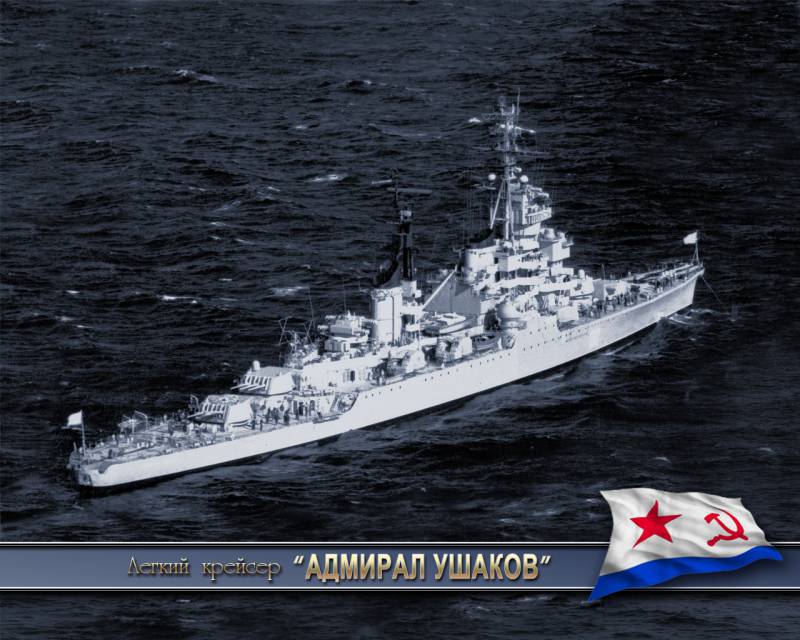
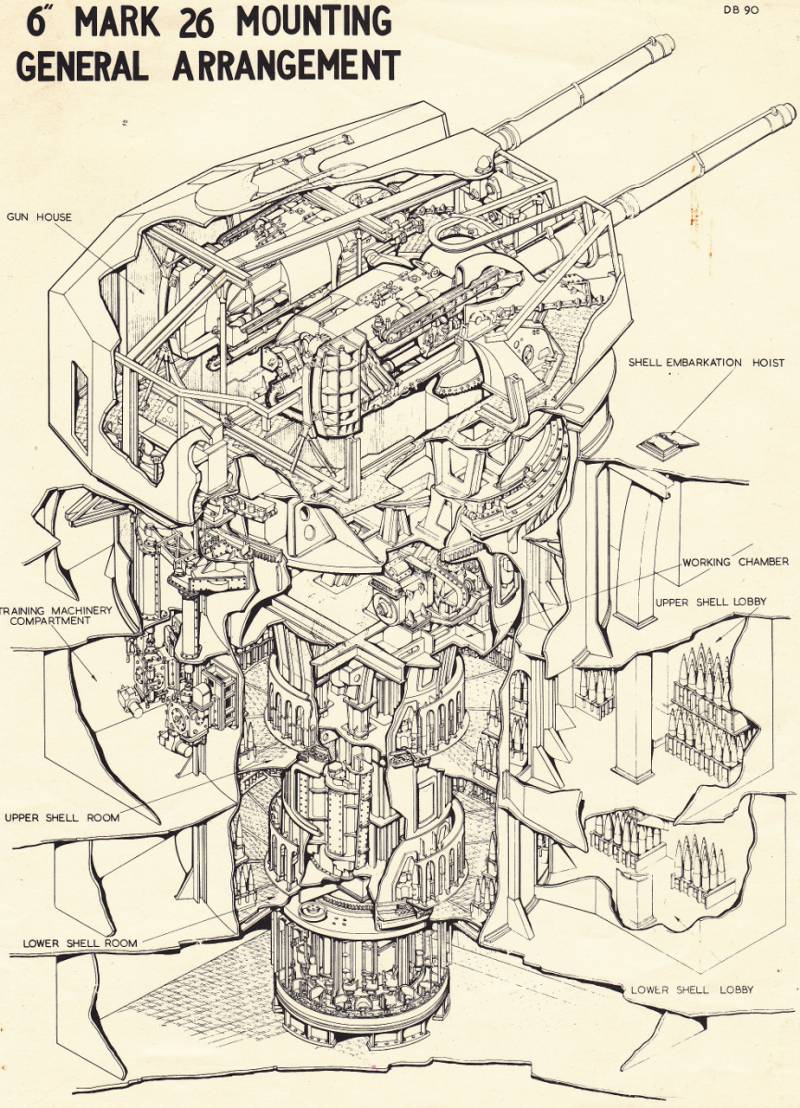
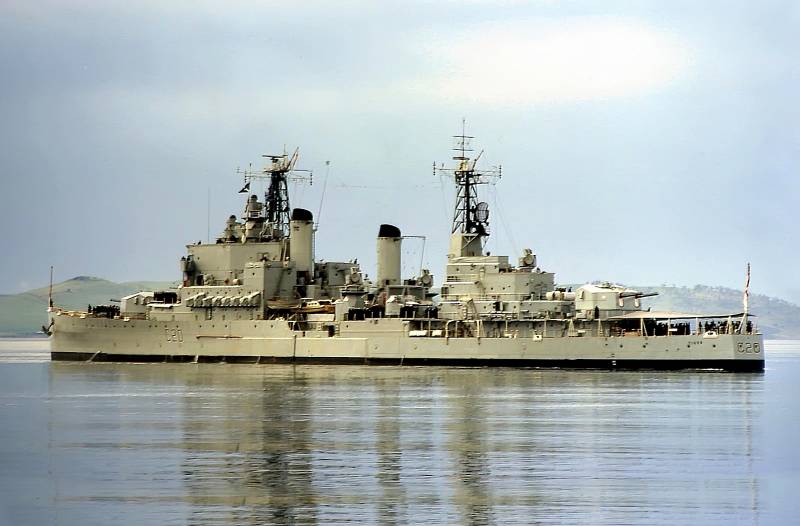
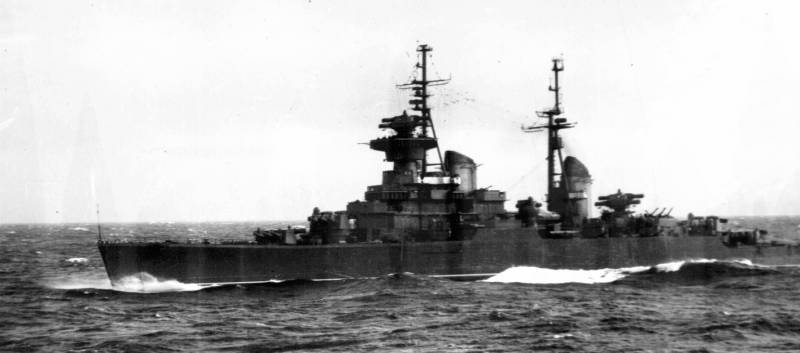
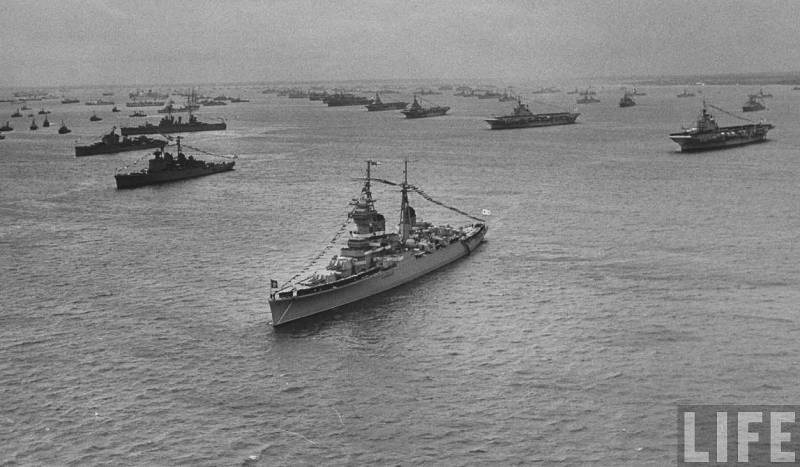

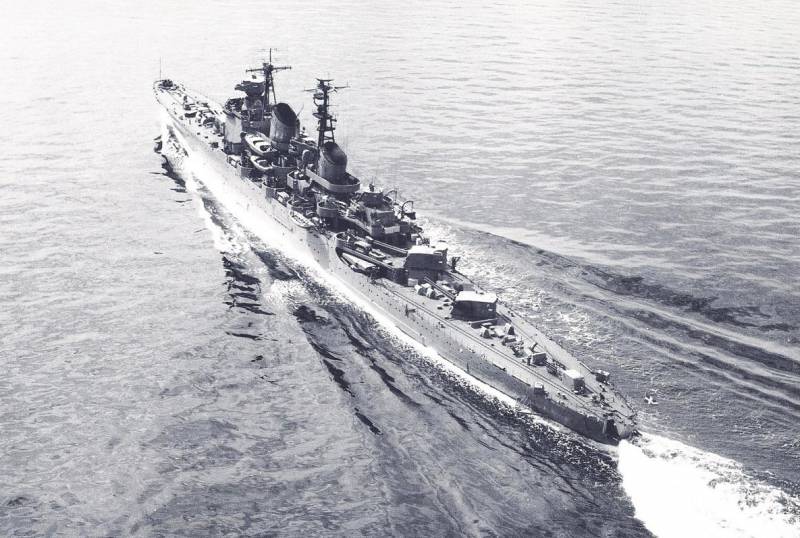
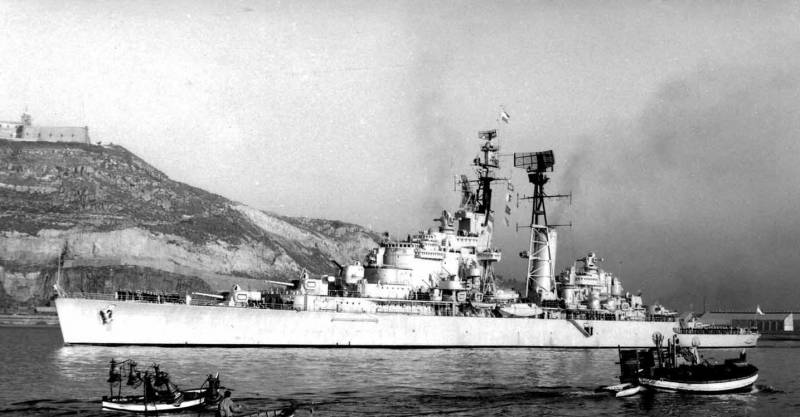
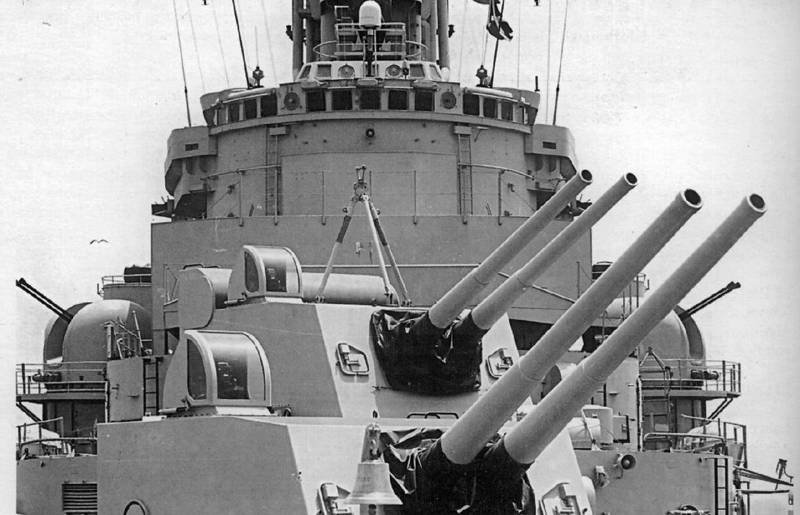
Information